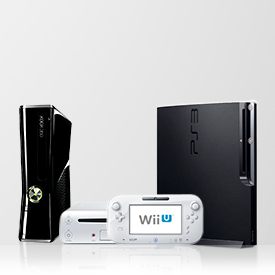
[ad_1]
Quick: What was the original video game console? Nope, not the Atari 2600, or even the popular Nintendo NES from the ’80s.
In fact, the very first console dates back to 1967, when “The Brown Box” was released, five years before the Magnavox Odyssey launched in the early ’70s, according to RIPT Apparel(Opens in a new window), which compiled a complete history of video game consoles into a tidy timeline (see below).
Home video games didn’t take off until about 1973, when Atari’s Pong arcade machine became so popular that the company decided to market the game as a home console two years later.
In the same year, Magnavox developed the Odyssey 100 and 200, in an effort to improve upon its former system. The TV manufacturer continued to release more Odyssey boxes, turning out the 300, 400, and 500 series in 1976. They were overshadowed the next year, though, when Atari’s iconic 2600 hit the market.
Nintendo, meanwhile, delivered its first console with 1978’s Color TV Game Series, which, according to RIPT Apparel, followed the Atari Pong-style games and was only available for sale in Japan.
Cabbage Patch Kids maker Coleco had a decent run in the late ’70s, pushing out five consoles in two years, and also introduced a line of ROM cartridges for the Atari 2600 and Intellivision before exiting the video game business in a few years later.
“As the struggle for domination continues between Nintendo and Sega, each of them released brand new consoles to challenge each other’s positions,” RIPT said, pointing to the classic Nintendo Entertainment System (1983) and the No. 1 console of its time, the Sega Mega Drive/Genesis (1988).
Two years later, the Super NES system rang in a new decade with massive competition.
The first few years of the ’90s marked what RIPT called a “notable shift in the medium used for storing games,” moving from cartridges to the more modern compact discs, helping to increase the capacity for video gaming and prompting a transition from 2D graphics to 3D.
Sony finally entered the console fight in 1994 when it introduced the Playstation, competing for interest along with the cartridge-based Sega Genesis 2 and 3 (released in 1994 and ’97, respectively), and the new Sega Saturn, aimed at rivaling other CD-compatible consoles. Nintendo stuck with the cartridge system for its Nintendo 64, which hit shelves in the mid ’90s.
In 1998, Sega became an Internet-gaming pioneer with the Sega Dreamcast’s built-in modem for online playing. By the new millennium, Sony, Microsoft, and Nintendo began taking over the market, with the PlayStation 2, Xbox, and Gamecube, respectively.
“Finally, the current generation of video game console only has room for three major competitors: Xbox 360, Sony PlayStation 3 and Nintendo Wii,” RIPT said. With the first two’s full 1080p HD graphics and the Wii’s innovative movement-sensing remote, “it seems that video gaming had indeed come a long, long way,” the graphic said.
For a full look at the decades-spanning video game industry, check out RIPT Apparel’s infographic below. Also see Atari: A Damaged Yet Vital Brand.
For more from Stephanie, follow her on Twitter @smlotPCMag(Opens in a new window).
[ad_2]
Source link : https://www.pcmag.com/news/infographic-evolution-of-the-console-from-brown-box-to-wii-u
